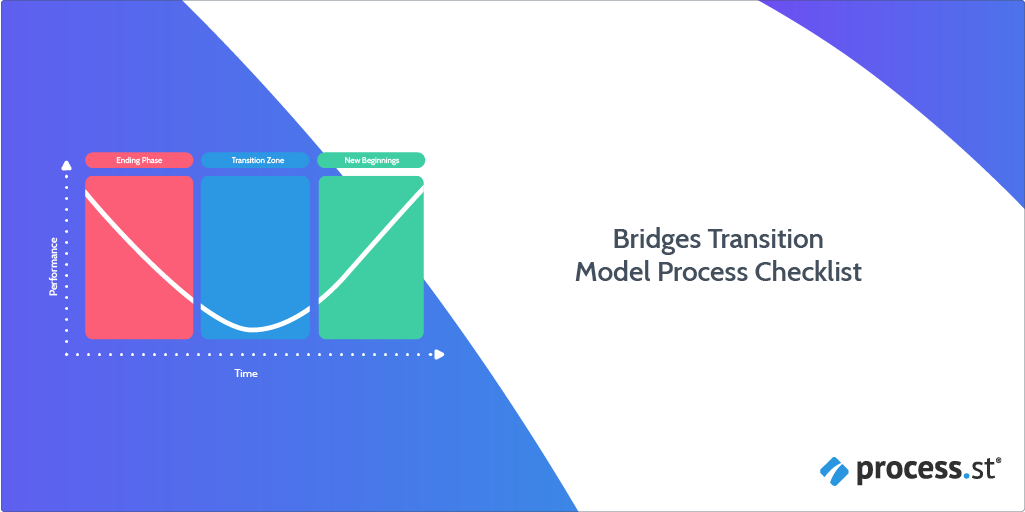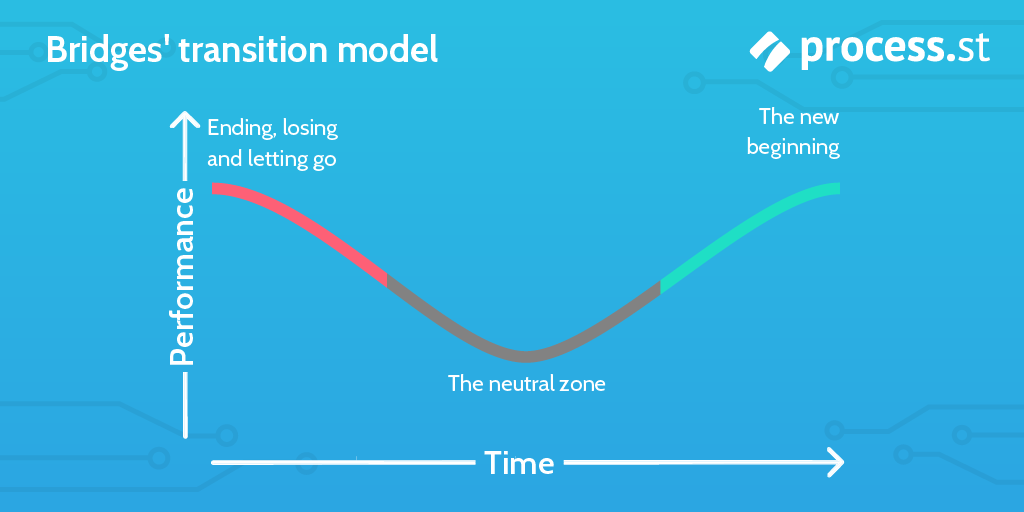Bridges Transition Model focuses on a transition rather than a change. Run this Bridges Transition Model Process Checklist to effectively manage change in the form of an organizational transition.
Bridges Transition Model: An introduction
The Bridges Transition Model was developed by William Bridges in 1991. The model looks at change as a transition, acknowledging the emotional journey employees will encounter during the change.
Change happens to people despite their reactions, or whether the recipient wants to change to not. Put simply, change is often forced on the recipient.
The transition model tackles change as a journey rather than an abrupt shift. This is done by detailing three stages to guide the recipient through change:
- Ending, losing, and letting go
- The neutral zone
- The new beginning
What's good about it
The Bridges model takes a rare approach to change, acknowledging the employee's reactions and emotions. The very personal approach helps everyone adapt to the changes, employees and upper management are not segregated here.
Employees are considered as people, and by doing so you inspire loyalty and better performance, strengthening work bonds and performance.
What's bad about it
There are no real actionable steps, no set timeline or conditions for moving from one stage to another. It is more of a transition checklist helping your employees than a step-by-step guide on implementing change.
How to use this checklist
At the beginning of this checklist, you will be presented with a set of specialized questions given as form fields. You are required to populate each form field with your data.
The checklist is broken down into the three stages of Bridge's transition model:
- Stage 1 - Ending, losing and letting go
- Stage 2 - The neutral zone
- Stage 3 The new beginning
At the end of each stage, your supervisor/manager will review your work using Process Street's approvals feature. Other features used in this template include:
- Stop tasks - To ensure task order.
- Dynamic due dates - To make sure your initiative is reviewed on time.
- Role assignment - To delegate tasks within your team ensuring your supervisors are appropriately assigned to the review tasks.
- Approvals - Tasks can be accepted, rejected, and rejected with comments.




